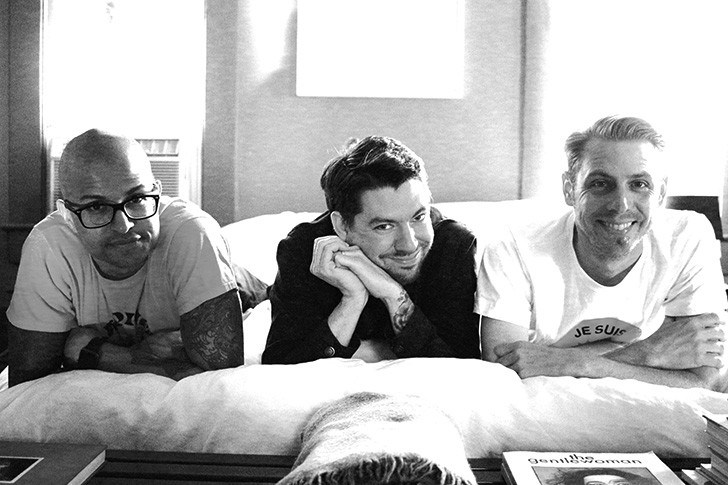Following a practice that was poignantly lit by the evening's electrical storm — casting bright flashes, God's strobe light, across a room riddled with the stabs and blows of Justin Boyd's envelopes, filters and oscillators reacting to the triggers fastened to Mat Roy's four-piece kit, we retire to the living room of Boyd's Southtown home, decorated with numerous art pieces, a kilim rug (pronounced "kill 'em," clearly the most metal of all floor décor) an impressive stereo system and Remy, Boyd and wife Melody's poodle-Maltese mix. I am offered a glass of Cótes de Tablas Rhone blend, of which Boyd also partakes, Roy preferring several fingers of bourbon garnished only by a singular, perfectly circular ice ball. We begin a discussion on the origins of the drum and modular synthesizer duo.
Roy, a math professor at the Alamo Colleges, is perhaps best known musically as the former drummer and owner of a 19-piece kit in The Spark, one of SA's latter day start-stop noise outfits. Boyd, the chair of Sculpture and Integrated Media at the Southwest School of Art, has his art prominently displayed throughout San Antonio, including a permanent sound installation at Yanaguana Gardens in Hemisfair Park.
In reference to the formation of the two-piece Boyd explains, "It was kind of complicated, but it was mostly oscillators. So, essentially, when Mat's drum triggers come in they're routed, usually there's two possible routes from each drum trigger. Like, you can do an envelope or an actual trigger, like gate signal, so it's like on-off, on-off ... so I thought, 'Wow, that'd be cool if Mat could just be the engine and then just route it a lot of different ways.'"
The analog modular synthesizer of which Boyd speaks is a Frankenstein-looking box with neon-colored wires running to-and-fro. In terms that people who don't worship at the altar of Robert Moog may understand, contact mics clipped to Roy's drums send signals to this big box, Boyd then tweaks a bunch of knobs, reacting to Roy's rhythms and beats; from jazzy hip-hop to driving metal or breakbeat punk, the reactions of the signal are manipulated in timbre, frequency, pitch and pulse by Boyd — a man monitoring a machine monitoring a man. If Roy plays a tom-filled gallop (think Sabbath's Bill Ward or the Melvins) or a stuttery hip-hop beat a lá Outkast's earlier material, Boyd manipulates the box's reaction, highlighting the heavy brutality or bass-driven thump funkiness.
In this way, there is really no genre in which to place the duo.
"The thing that I think is most fun about it is neither Mat or I have an ego about what this thing is supposed to sound like," Boyd says of the group that frequently invites one other musician into the fore for live shows. "I don't even know what the hell I'm thinking would be a frame of reference for this," adds Roy. "I think what's fun is there's no song structure whatsoever. [At] no show have we ever played the same thing."
"Because the set up is temperamental, it will never give us the same sound again, technically," Boyd says.
This makes for infinite possibilities, something that Boyd and Roy, being an accomplished artist and mathematician, respectively, value and champion in their hip-hop, metal, punk, electronic, analog noise band: The radical possibilities of chance.


